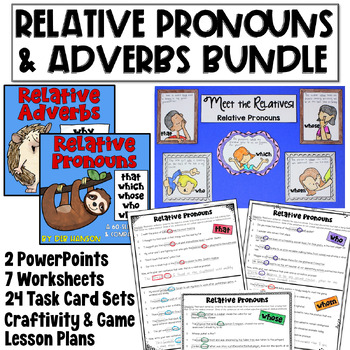If you are a fourth-grade teacher who lives in a state that has adopted the Common Core standards, you are familiar with relative adverbs and relative pronouns. As you can see by the anchor chart below, relative pronouns are fairly simple to identify in sentences. However, writing sentences with relative pronouns are a bit trickier to write. First of all, there's that pesky "who vs. whom" issue. In some respects, the "that vs. which" issue is even more muddled. Second, sometimes you use commas before and after adjective clauses, and sometimes you do not.
I use an anchor chart to review relative pronouns to students. As you can see below, I have students help identify the relative pronoun, the entire adjective clause, and the noun that is being modified. It is important to have students identify the entire adjective clause because that will later help them determine whether they need to use commas before and after the clause.
If you are planning to dive into the topic of relative pronouns and adverbs, I invite you to check out the bundle shown below by clicking on the image. It includes 5 days of lesson plans, where I explain exactly how I teach this topic over the course of one week.
Have a great week!
~Deb
If you are planning to dive into the topic of relative pronouns and adverbs, I invite you to check out the bundle shown below by clicking on the image. It includes 5 days of lesson plans, where I explain exactly how I teach this topic over the course of one week.
Have a great week!
~Deb










Thanks for sharing! I really like your anchor chart! I already posted it to my Pinterest page.
ReplyDelete- Kat @ The Spunky Teaching Monkey